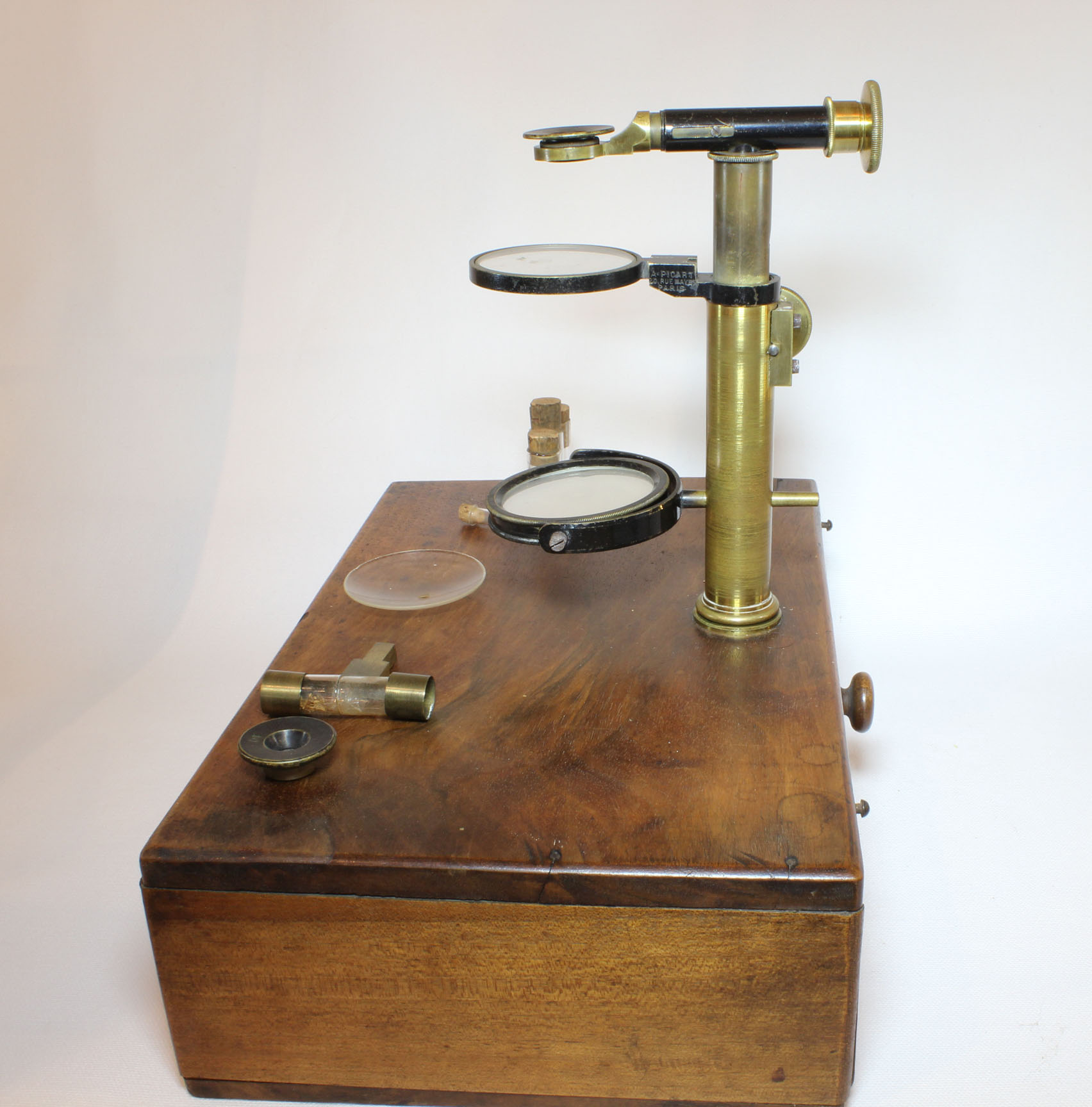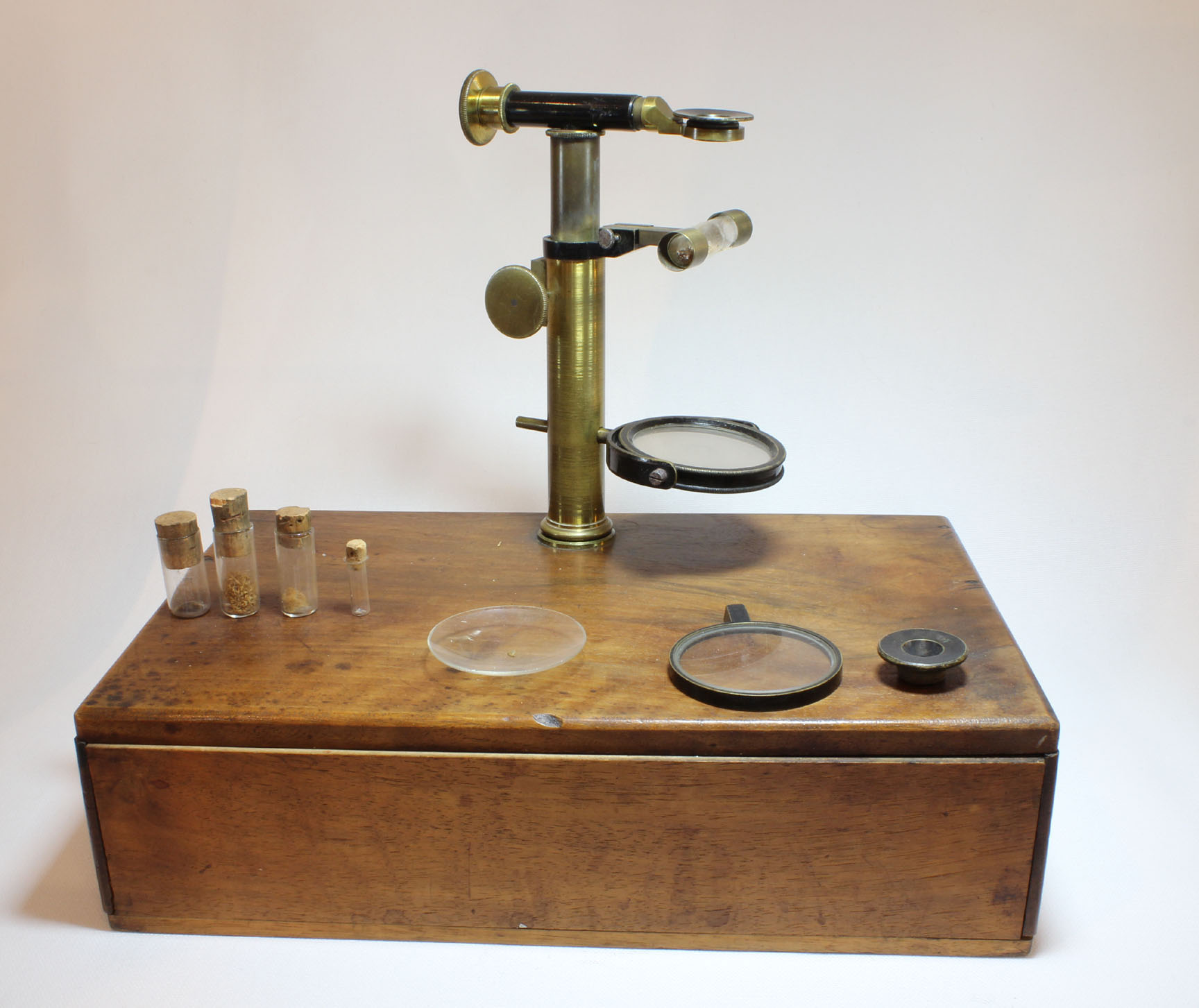'RASPAIL'S MICROSCOPE'
c. 1880
SIGNED: A. PICART 20 RUE MAYES PARIS
Please Click On Any Picture for a Larger Version
DESCRIPTION:
Signed in block letters on the arm: 'A. PICART 20 RUE MAYES PARIS.'
This is a fairly well-built, 'Raspail-type' of simple (or single) microscope. Focus is by rack and pinion to the vertical pillar. The arm can rotate inside the pillar, and the
arm can move forward and backward via a knob controlling a screw movement. There is a flat stage which can hold a flat glass plate or a watchglass (for liquid specimens), and there is
an accessory stage for holding a vial or test-tube. There are two original eyepieces. The mirror is single but gimballed, sliding into the pillar on a pin. The case has a drawer with fittings to store
the microscope, and its accessories. There is a permanent boss on the case which the pillar is screwed into for erecting the microscope.





HISTORY OF THIS TYPE OF MICROSCOPE
This is basically an 'Ellis aquatic' microscope with modifications as first suggested in the 1830's by Raspail, and originally constructed by Deleuil. It was subsequently copied by makers such as Picart and Chevalier. Whereas the original Ellis aquatic types
were made in the 1700's, this instrument was made over 100 years later. It should be noted that the attribution to Ellis is likely inappropriate as Trembley was the originator.
The main modifications from the original 'Ellis' model found on this model are rack and pinion focus and a fine-screw forward and backward motion to the arm, the latter being Raspail's contribution. As the father of histochemistry, this microscope has been referred to as a 'Chemical' microscope, but there is not evidence that Raspail himself actually used that term. On the other hand, many of his contemporaries and later authors have called this 'Raspail's Microscope'4. For some of Raspail's original works, including the atlas for his works, see the references with links1,2,3 below.
Alexandre Auguste Picart was born in Paris on June 9 1834. He first appeared in the Paris business directory in 1875. He was listed as "Picart et Fils" in 1896 and '97, then as A Picart afterward. In 1907 his shop at 20 Rue de Mayet is still listed in directories. (The author is grateful to Dr Brian Stevenson for this added information). Another, virtually identical instrument, was sold on Ebay in 2011.
Picart was known to make polarizing microscopes and one was sold at a German auction earlier in this century.




